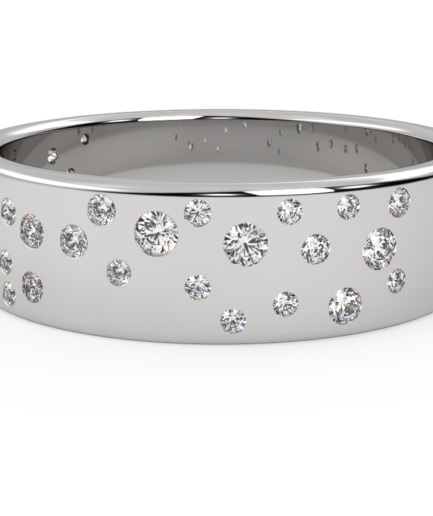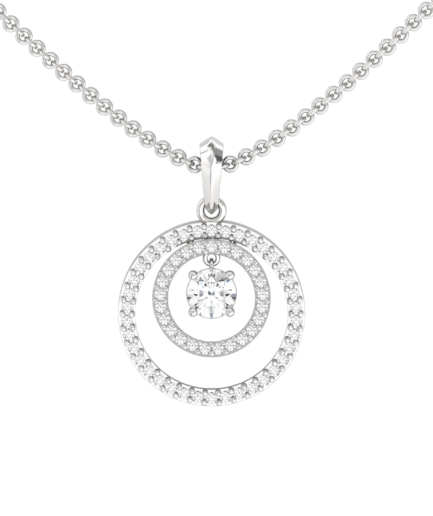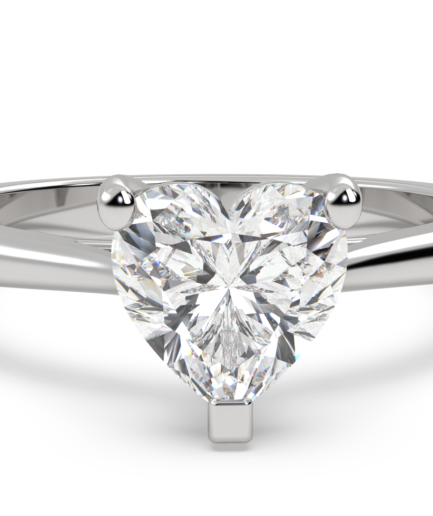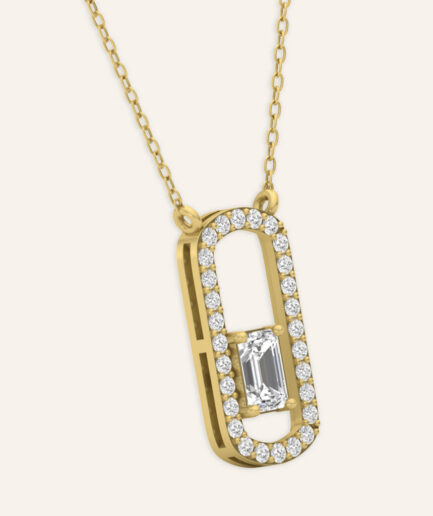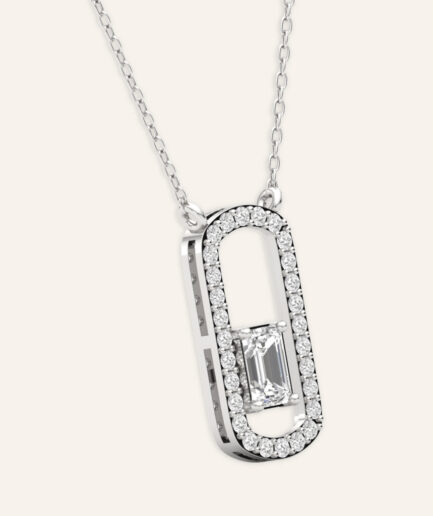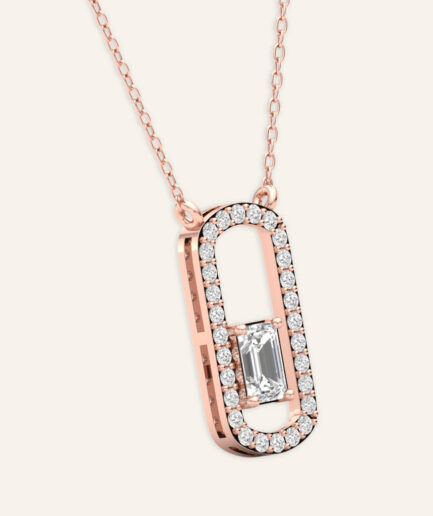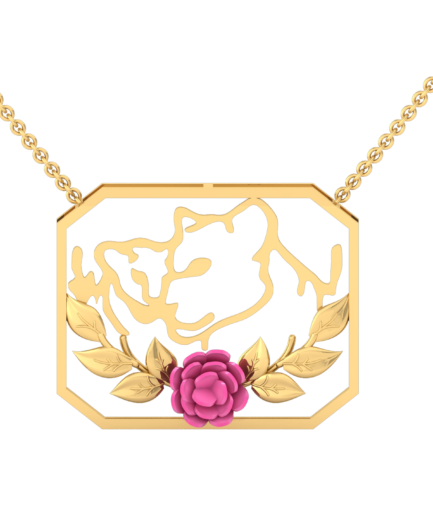Ever opened your jewellery box and found your favourite silver piece looking a little… lacklustre? Like it’s lost its sparkle and developed this strange, shadowy film? You’re definitely not alone! It’s a common occurrence with silver jewellery, and the good news is, it doesn’t mean your beloved piece is ruined. That, my friend, is what we call tarnish.
Now, don’t go thinking your precious silver has suddenly become second-rate! Tarnish is simply a natural chemical reaction that happens when silver comes into contact with certain elements in the air. Think of it like a layer of dust settling on a cherished item – easily taken care of! Sterling silver, which is widely used to craft beautiful silver jewellery, is particularly prone to this little phenomenon. Pure silver is quite soft, so it’s often mixed with other metals (usually copper) to give it strength and make it more durable. This mix, while great for everyday wear, also makes it a tad more reactive to what’s around it.
While gold jewellery tends to remain its radiant self, silver can sometimes throw a bit of a tarnish tantrum. But hey, that’s just part of its metallic personality! The even better news? It’s totally fixable! We’re not talking about some irreversible decay here. Think of it as a temporary dullness, a little less shine for a while.
So, take a deep breath! That blackish or yellowish layer isn’t a sign of poor quality or that your jewellery is past its prime. It’s just tarnish, and there are some super straightforward and effective ways to bring back that gorgeous gleam you adore. Keep reading, because we’re about to share all the secrets on how to banish that tarnish and keep your silver jewellery looking its absolute best!
What Exactly Is Tarnish? (Keep it Simple, Folks!)
Okay, so we know it looks a bit grim, but what’s actually going on with this tarnish business? Well, put simply, that blackish or sometimes yellowish film you see on your silver isn’t dirt or grime in the usual sense. It’s actually a chemical reaction – think of it like your silver having a little rendezvous with stuff floating around in the air.
The main culprit in this reaction is usually sulfur. Yep, that same stuff that can sometimes give off a not-so-pleasant smell. Sulfur compounds are all around us – they can be in the air pollution, in the humidity, and surprisingly, even in things like our own sweat and skin oils! Sometimes, even certain foods or rubber bands can contribute to the tarnishing process. It’s like your silver is constantly bumping into these sulfur molecules, and when they meet, they form a new compound on the surface of your jewellery called silver sulfide. And that’s what you’re seeing as tarnish.
Think of it this way: silver atoms on the surface of your jewellery are bonding with sulfur atoms from the environment. It’s not like the silver is disappearing or decaying; it’s just forming a new layer on top. This layer is what gives your silver that dull, darkened appearance. It’s a bit like how iron can rust when it reacts with oxygen – a natural process happening at the surface.
The key thing to remember is that this tarnish is usually just a very thin layer on the surface of the silver. It hasn’t fundamentally changed the silver itself. So, when you’re cleaning your silver, you’re essentially removing this layer of silver sulfide to reveal the shiny silver underneath once again. Pretty neat, huh? It’s not some deep-seated issue; it’s more like a temporary visitor that can be shown the door with a little bit of elbow grease (or some clever cleaning methods we’ll get into later!). So, rest assured, that beautiful silver you love is still there underneath all that tarnish!
Speaking of the beauty of silver…
Why not explore our exquisite collection of sterling silver pieces at Mistara Jewels? Each design is crafted with love and meant to be cherished.
Recommended products
-
Diamond Studded Elegant Ring
Add to basketOriginal price was: ₹1,900.00.₹1,849.00Current price is: ₹1,849.00. -
Necklace with Multi-Rings Pendant
Add to basket₹1,999.00 -
Heart Shaped Ring
Add to basketOriginal price was: ₹2,100.00.₹1,999.00Current price is: ₹1,999.00.
Why Does Silver Tarnish More Than Gold?
You might’ve noticed that your gold jewellery tends to keep its lovely shine without much fuss, while your silver pieces can sometimes look like they’re auditioning for a role in a gothic movie. Ever wondered why this is the case? It all boils down to how reactive these precious metals are.
Think of it like this: some people are more outgoing and interact with everyone they meet, while others are more reserved. Metals have similar tendencies when it comes to reacting with other elements.
Gold: The Chill One of the Bunch
Gold is what we call a noble metal. No, it doesn’t have a crown or anything! In chemistry terms, “noble” means it’s very stable and doesn’t readily react with most elements, including oxygen and sulfur, which are the main culprits behind tarnish.
Because gold is so unreactive, it pretty much ignores the sulfur compounds hanging around in the air or the oils on your skin. It prefers to keep to itself, maintaining that beautiful golden lustre for ages without needing much intervention. That’s why you can often wear gold jewellery for years and it still looks as radiant as the day you got it.
Silver: The Social Butterfly (Sometimes a Bit Too Social!)
Silver, on the other hand, is a bit more of a social butterfly in the metallic world. While it’s not as reactive as some other metals out there, it’s definitely more outgoing than gold.
Specifically, silver has a stronger affinity for sulfur. When silver atoms encounter sulfur atoms (from those sources we talked about earlier like air pollution, humidity, and even your skin), they readily bond together, forming that silver sulfide layer – the dreaded tarnish.
You can almost picture the silver atoms reaching out and grabbing those sulfur atoms, creating this new compound on the surface.
The Role of Alloying Metals
Now, most silver jewellery isn’t made of pure silver. Pure silver is quite soft and would easily get scratched or bent. So, it’s usually mixed with other metals, most commonly copper, to make it stronger and more durable. This mixture is what we call sterling silver (usually marked as .925, meaning 92.5% pure silver).
The presence of these other metals, particularly copper, can sometimes speed up the tarnishing process. Copper can also react with the environment, and while it doesn’t form the black silver sulfide, it can contribute to a dullness or even a greenish hue in some cases.
So, in a nutshell, silver tarnishes more than gold because it’s chemically more reactive to sulfur and other elements in its environment. Gold, being the “noble” metal, pretty much shrugs off these interactions. It’s just the nature of these elements! But don’t worry, this doesn’t make silver any less beautiful or valuable – it just means it needs a little more TLC to keep that gorgeous shine.
Spotting the Signs: When Your Silver Needs Some TLC
Your silver jewellery is more than just an accessory; it’s a piece of personal history, a marker of memories. So, keeping an eye on it will not only maintain its sparkle but also help you catch any tarnish build-up early, making it easier to clean. Here’s what to watch out for:
The Case of the Missing Shine
This is often the first and most obvious sign. Remember that bright, reflective gleam your silver had when it was new? If it’s starting to look a bit… meh, dull, or just generally less vibrant, that’s a pretty good indicator that tarnish is starting to form. It’s like the light has been turned down on its inherent beauty.
The Subtle Shift in Colour
Keep an eye out for any changes in the silver’s colour. It might not go straight to black. Sometimes, tarnish starts as a subtle yellowish or brownish hue. Think of it as a precursor to the darker stuff. If you notice these initial changes, it’s a good time to take action before it gets more pronounced.
The Emergence of Dark Patches
This is the classic sign of tarnish. You might start seeing grey, dark brown, or even black spots or patches appearing on the surface of your silver. These are areas where the silver has reacted more significantly with the sulfur compounds in the environment. These patches can sometimes appear in intricate details or crevices first, so give those areas a closer look.
Overall Lack of Luster
Sometimes, instead of distinct patches, the entire piece of silver might just look… flat. It lacks that lively, reflective quality it once had. This could mean a more uniform layer of tarnish has formed across the surface.
Feel the Difference
While not always obvious, heavily tarnished silver can sometimes feel slightly rough or less smooth to the touch compared to clean silver. This is due to the layer of silver sulfide on the surface.
Pay Attention to High-Contact Areas
Pieces like rings and bracelets, which come into more contact with your skin and the environment, might tarnish more quickly. Also, necklaces, especially the parts that sit close to your neck, can be more susceptible due to sweat and skin oils.
Consider Storage Conditions
If you’ve left a piece of silver out in the open for a long time, especially in humid conditions or areas with potential pollutants, it’s more likely to have tarnished. Jewellery stored in airtight containers tends to fare better.
A Little Detective Work Goes a Long Way
Regularly taking a quick peek at your silver jewellery will help you spot these early signs of tarnish. The sooner you notice it, the easier it will be to clean and restore its original brilliance. It’s all about being a little observant and giving your cherished silver the attention it deserves. Think of it as a little routine check-up for your beloved pieces!
Don’t Panic! Easy Ways to Banish Tarnish and Bring Back the Sparkle
Alright, so you’ve spotted some tarnish. No sweat! It’s time to roll up your sleeves (figuratively, unless you’re really getting into it!) and learn some tried-and-true methods to restore your silver’s shine. The best part? You probably have many of these items already lying around!
The Gentle Approach: A Soft Cloth Polish
For light tarnish or just regular upkeep, a good quality, soft, lint-free cloth can work wonders. Microfiber cloths are fantastic for this!
How to do it: Gently rub the silver piece with the cloth. The slight abrasion can help remove the initial layers of tarnish and buff up the surface.
Pro Tip: Make this a habit after wearing your silver. A quick wipe-down can prevent tarnish from building up in the first place by removing skin oils and environmental residues. You can even find special silver polishing cloths that have anti-tarnish agents embedded in them for an extra boost.
Soapy Solution: Mild Dish Soap to the Rescue
For slightly more stubborn tarnish, a simple solution of lukewarm water and a few drops of mild dish soap can be effective.
How to do it:
- Mix the soapy water.
- Gently clean the silver with a soft brush – an old toothbrush with soft bristles works great for getting into intricate details.
- Rinse the silver thoroughly under clean, lukewarm water to remove all soap residue.
- This is crucial: Dry the silver completely with a soft, lint-free cloth. Any lingering moisture can encourage more tarnish.
Why it works: The mild soap helps to loosen surface dirt and oils, making it easier to wipe away the tarnish.
The Baking Soda Power Paste (Handle with Care!)
Baking soda is a mild abrasive and can be effective for tackling more noticeable tarnish. However, it’s essential to use it gently, as it can scratch softer silver if you’re too rough.
How to do it:
- Make a paste by mixing a small amount of baking soda with just enough water to form a thick consistency.
- Apply the paste to the tarnished areas using a soft cloth or your fingertips (ensure your hands are clean!).
- Gently rub the paste on the tarnish. Avoid scrubbing too hard.
- Rinse the silver very thoroughly with clean, lukewarm water to remove all traces of baking soda.
- Again, make sure to dry it completely with a soft cloth.
A Word of Caution: For delicate or antique silver, you might want to test this method on a small, inconspicuous area first to ensure it doesn’t cause any damage.
The Chemical Reaction Magic: Aluminium Foil, Baking Soda, and Hot Water
This method sounds a bit like a science experiment, and in a way, it is! It uses an electrochemical reaction to transfer the tarnish from your silver to the aluminium foil.
How to do it:
- Line a glass or ceramic bowl with aluminium foil, shiny side up.
- Add hot (not boiling) water to the bowl.
- Stir in about a tablespoon of baking soda for each cup of water.
- Submerge your silver jewellery in the solution, making sure it’s touching the aluminium foil. You might see some bubbling – that’s the reaction happening!
- Let it sit for a few minutes (the time will depend on the severity of the tarnish – check periodically).
- Remove the silver with tongs (the water will be hot!).
- Rinse it thoroughly with clean water and dry it completely with a soft cloth.
How it works: The hot water and baking soda solution helps to loosen the silver sulfide (tarnish). The aluminium is more reactive than silver, so in this solution, the sulfur ions are attracted to the aluminium instead, effectively transferring the tarnish away from your silver.
Things to note: This method works best when the silver is in direct contact with the aluminium. It’s generally a gentler method than abrasive polishes.
The Professional Touch: Commercial Silver Polishes
There are many excellent commercial silver polishes available in liquid, paste, or cloth forms. These are specifically formulated to remove tarnish and often contain ingredients that help to slow down future tarnishing.
How to use: Always follow the instructions provided on the product. Generally, you apply a small amount of polish to a soft cloth, gently rub it onto the silver, and then buff it clean with a separate clean cloth.
Choosing a polish: Opt for polishes that are specifically designed for silver. Avoid harsh or abrasive cleaners that could damage the metal.
Important Reminders for All Cleaning Methods:
- Always dry your silver thoroughly after cleaning to prevent water spots and further tarnish.
- Use a soft, lint-free cloth to avoid scratching the surface.
- Be gentle! Avoid harsh scrubbing, especially on delicate pieces or those with gemstones.
- For heavily tarnished or intricate pieces, you might need to repeat the cleaning process.
- If you’re unsure about cleaning a particular piece, especially if it’s antique or has sentimental value, consider consulting a professional jeweller.
With these methods in your arsenal, you can confidently tackle that tarnish and keep your silver treasures looking their radiant best!
Just like the right care enhances the beauty of silver, the right piece can elevate your style.
Explore the timeless elegance of our silver jewellery at Mistara Jewels and find a piece you’ll adore.
Prevention is Better Than Cure: Keeping Your Silver Shiny for Longer
While knowing how to tackle tarnish is great, wouldn’t it be even better to minimise it in the first place? Absolutely! A few simple habits and storage solutions can go a long way in keeping your silver jewellery looking its radiant best, reducing the need for frequent cleaning. Think of these as little life hacks for your precious pieces!
Smart Storage is Key
How you store your silver when you’re not wearing it can make a huge difference.
- Airtight is Your Ally: Exposure to air is a major culprit in tarnishing. Storing your silver in airtight bags (like zip-top bags), individual pouches made of anti-tarnish fabric, or jewellery boxes designed to minimise air exposure can significantly slow down the process.
- Keep Pieces Separate: Avoid storing your silver jewellery in a jumble. When pieces rub against each other, it can cause scratches and potentially speed up tarnishing in those areas. Use dividers or individual compartments within your jewellery box.
- Consider Anti-Tarnish Strips or Tabs: These little wonders absorb the sulfur compounds in the air, helping to protect your silver. You can often find them at jewellery stores or online. Just toss a few in your jewellery box or storage bags.
Keep it Dry, My Friend
Moisture accelerates the tarnishing process.
- Remove Before Water Activities: Take off your silver jewellery before showering, swimming (especially in chlorinated water or saltwater), or doing dishes.
- Dry Thoroughly: If your silver does get wet, make sure to dry it completely and gently with a soft, lint-free cloth.
Steer Clear of Harsh Chemicals
Many everyday products can react with silver and contribute to tarnish.
- Perfumes and Lotions: Apply perfumes, hairsprays, and lotions before putting on your silver jewellery. Let them dry completely to minimise direct contact.
- Household Cleaners: Avoid wearing silver while using household cleaners, as they can contain harsh chemicals that can damage the metal or accelerate tarnishing.
The Last On, First Off Rule
Make it a habit to put on your silver jewellery last when getting ready and take it off first when you get home. This reduces its exposure to makeup, hair products, and other substances.
Gentle Handling
Your skin contains oils and sweat, which can contribute to tarnish over time. While you don’t need to wear gloves every time you touch your silver, being mindful and wiping your pieces down occasionally after wearing can help.
Regular Wear Can Actually Help (Believe It or Not!)
Interestingly, wearing your silver jewellery can sometimes help prevent tarnish. The natural friction from wearing can help to keep the surface clean and rub off early stages of tarnish. It’s like giving your silver a gentle, continuous polish!
By incorporating these simple preventative measures into your routine, you can significantly reduce the amount of tarnish that forms on your beloved silver pieces, keeping them sparkling and beautiful for longer with less effort. It’s all about creating a little shield of protection for your treasured Mistara Jewels (and all your other silver goodies!).
Mistara Jewels Cares for Your Shine
At Mistara Jewels, we believe that the beauty of your jewellery should last as long as the memories you make while wearing it. We pour passion and precision into crafting each piece, whether it’s radiant gold or elegant silver, because we know it becomes a part of your story.
Understanding that silver, with its unique charm, can sometimes require a little extra care is part of appreciating its beauty. We hope this guide has empowered you with the knowledge to confidently tackle tarnish and keep your silver treasures gleaming. Remember, a little effort goes a long way in preserving the brilliance of your cherished pieces.
We’re committed to providing you with not only exquisite jewellery but also the guidance to care for it. Should you ever have any questions about cleaning or maintaining your Mistara Jewels, don’t hesitate to reach out – we’re always happy to help!
And if this talk of sparkling silver has you inspired, we invite you to explore our stunning collections. From everyday elegance to statement pieces, we have a range of silver and gold jewellery designed to capture your heart and shine for years to come. Discover your next treasured piece at MistaraJewels.
Because at Mistara Jewels, we believe in “Elegance Crafted in Every Carat, Lasting a Lifetime” – and that includes keeping that elegance shining bright!
The Gleaming Truth: Tarnish Doesn’t Diminish Beauty
So, there you have it! That sometimes pesky black stuff on your silver? It’s just tarnish – a natural occurrence and certainly not a sign that your beautiful piece has lost its value or charm. Think of it as a part of silver’s journey, a testament to its interaction with the world around it.
Just like a favourite book might gather a bit of dust on its cover, a little tarnish on your silver is easily remedied with a touch of care. The inherent beauty and timeless elegance of the silver remain, waiting to be revealed once more with a gentle clean.
We hope this has shed some light on the mystery of tarnish and equipped you with the knowledge to keep your silver sparkling. Embrace the beauty, understand the nature of the metal, and enjoy the process of keeping your treasured pieces looking their best. After all, a little bit of care ensures that your elegant silver continues to shine, reflecting your own radiant style for years to come.
Now that you’re a tarnish-tackling pro, why not treat yourself (or a loved one) to a new piece of radiant silver from Mistara Jewels? Explore our latest designs and find something truly special.
-
Heart Shaped Ring
Add to basketOriginal price was: ₹2,100.00.₹1,999.00Current price is: ₹1,999.00. -
Diamond Studded Elegant Ring
Add to basketOriginal price was: ₹1,900.00.₹1,849.00Current price is: ₹1,849.00. -
Rose Necklace with Pendant
Add to basketOriginal price was: ₹2,100.00.₹1,899.00Current price is: ₹1,899.00.


